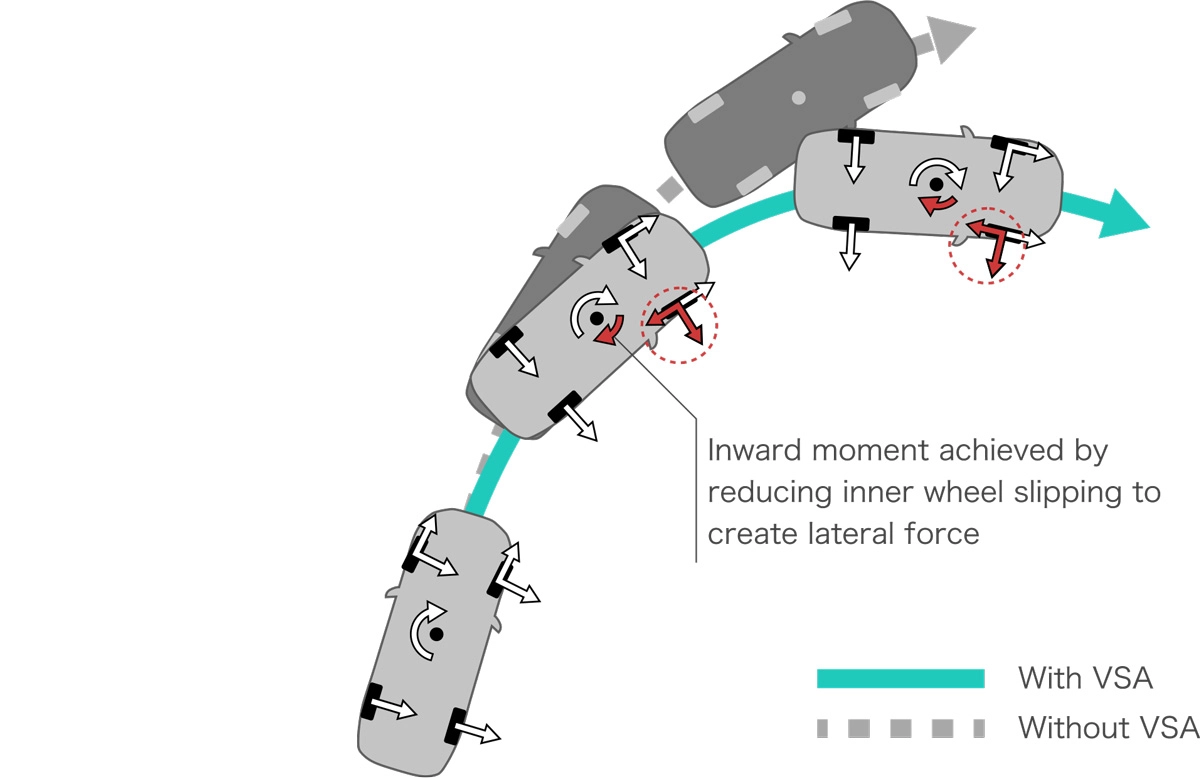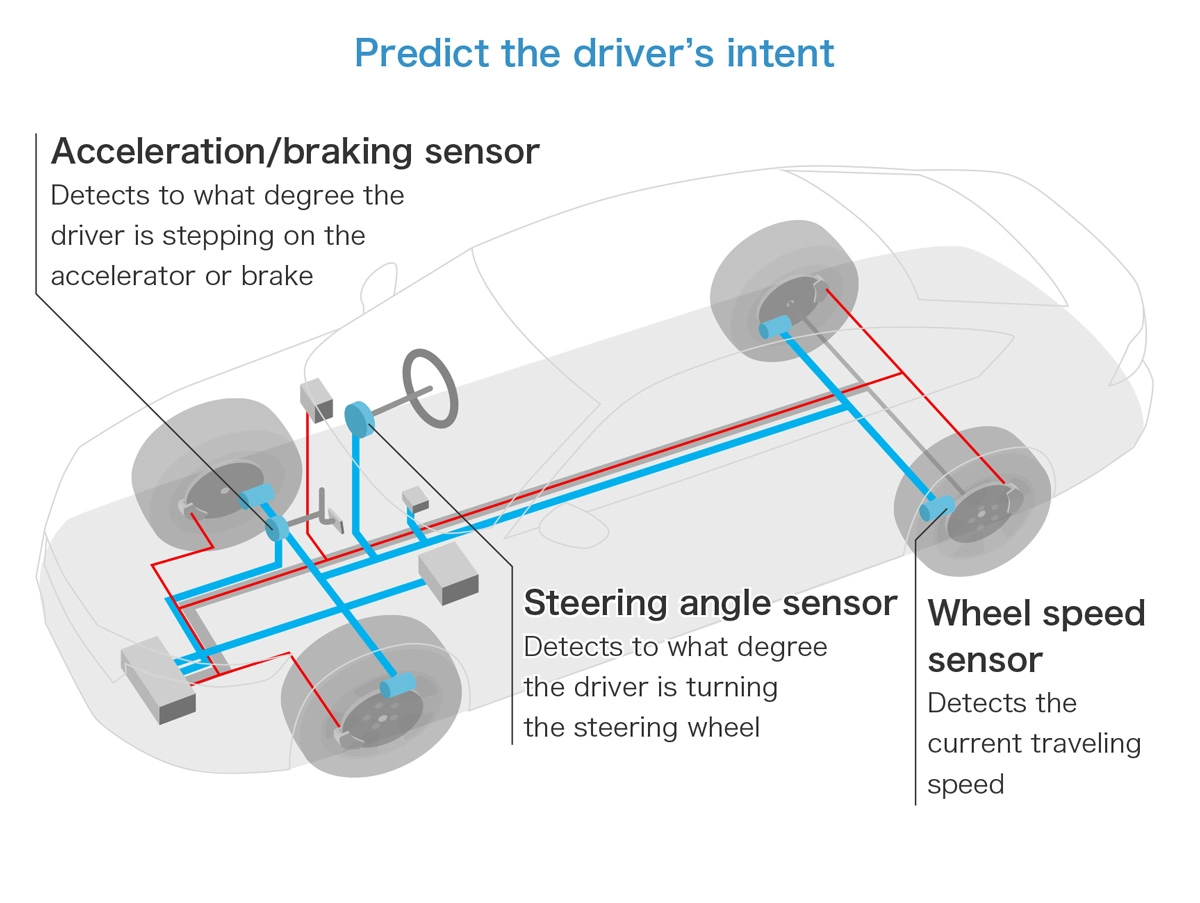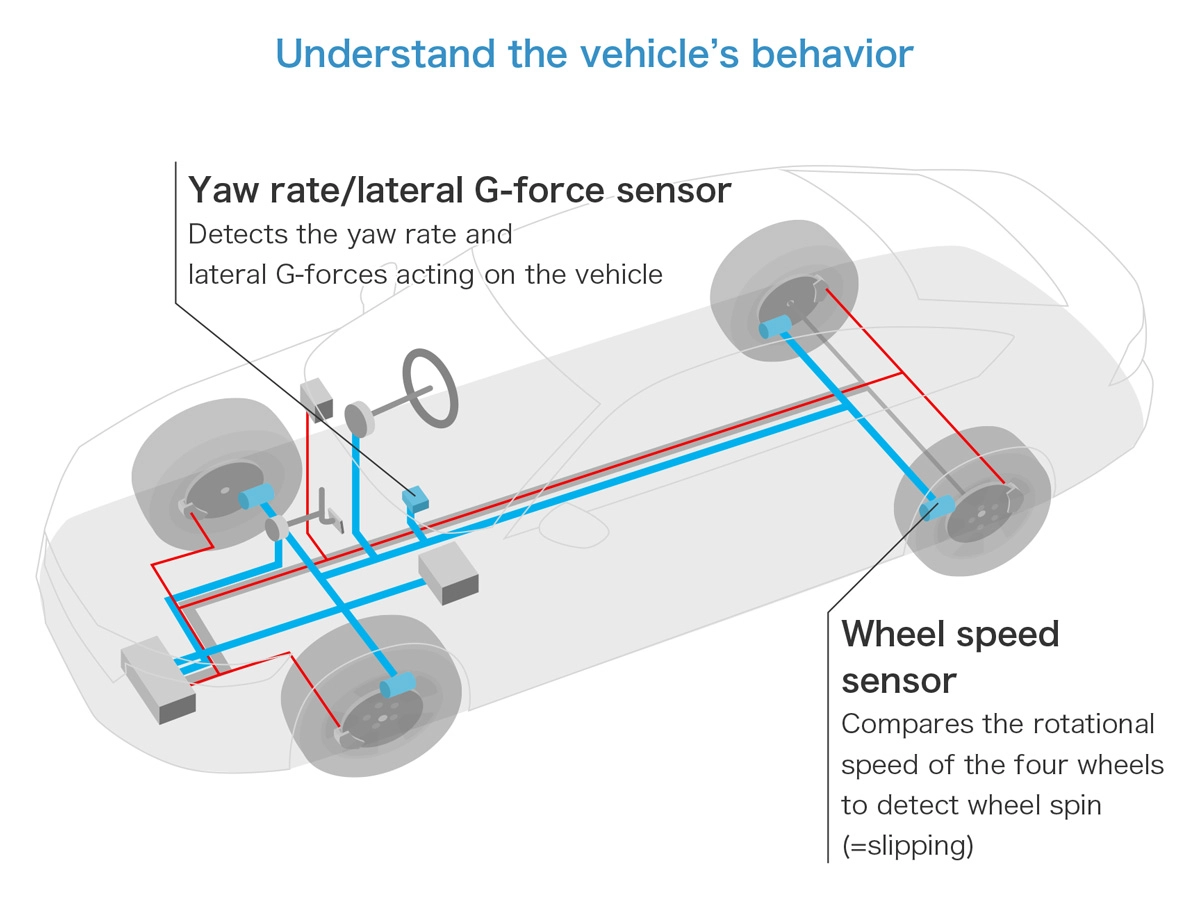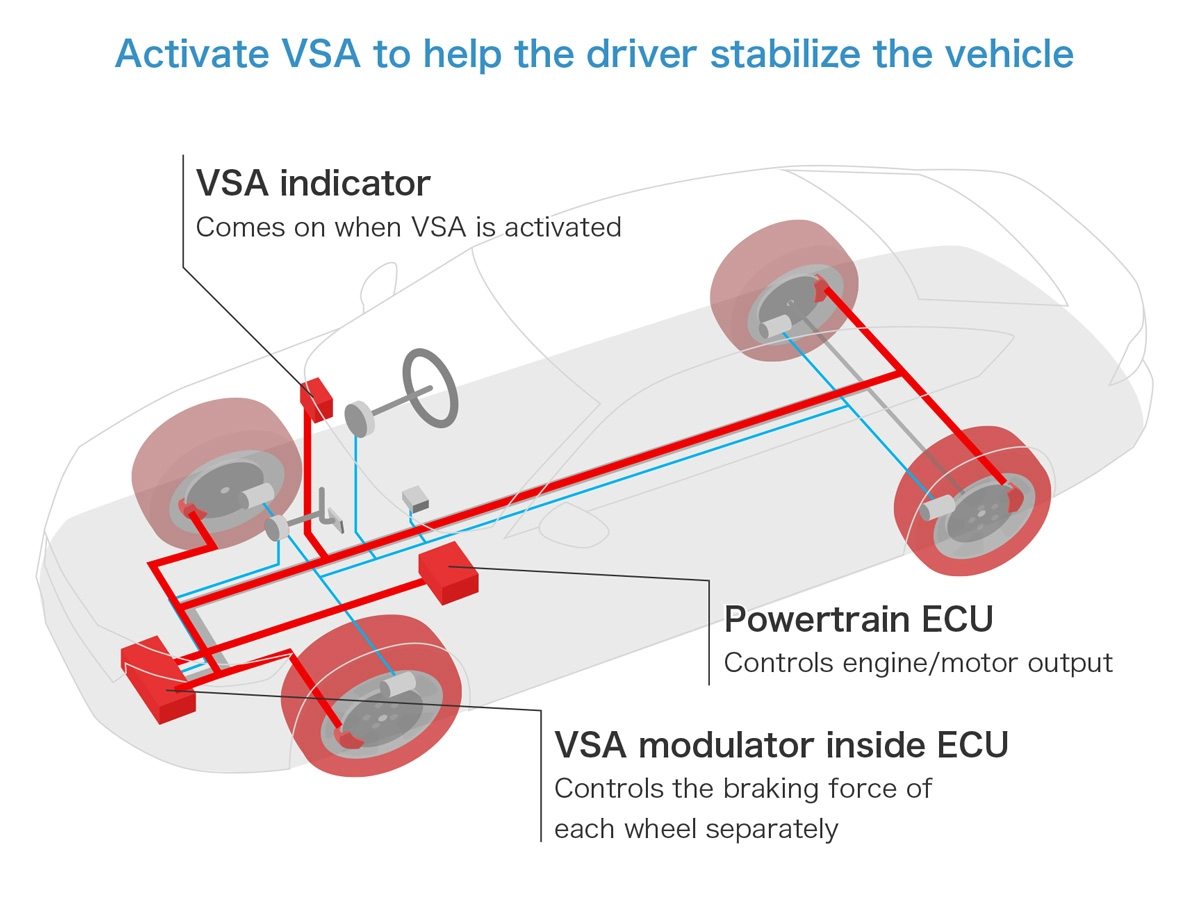Vehicle Stability Assist (VSA)

Driver-centric system providing assistance at performance limits
Vehicle Stability Assist (VSA) is an active safety system that controls the
Anti-lock Brake System (ABS), Traction Control System (TCS), and side slip
control function all together to suppress sudden changes in vehicle
behavior.
The name uses the word “Assist” because Honda always puts drivers in charge
and aims to create vehicles that support safe driving, providing peace of
mind allowing drivers to enjoy driving. VSA technology has progressed in
line with this philosophy and has been applied to Agile Handling Assist, the
Motion Management System, and other technologies providing peace of mind and
driving enjoyment in a wide variety of scenarios.

VSA conceptual diagram

Suppressing changes in vehicle behavior to ensure ease of driving
VSA is a control system supporting vehicle stability. It comprises front and
rear direction control using the ABS (four-wheel anti-lock braking),
preventing wheel locking during braking, and the TCS, preventing wheel spin
during acceleration, as well as added side slip prevention, for example
during turning. By preventing sudden changes in vehicle behavior, the system
helps the driver by making it easy to perform the next operation (stay in
calm control of the vehicle).
For instance, vehicles sometimes lose stability due to a sudden change of
road surface or due to the driver’s steering or braking operations. If
appropriate action is not taken at such times, that instability is
amplified. VSA’s role is to suppress such hard-to-control sudden changes in
vehicle behavior and make it difficult to exceed the grip limit of the tires
throughout driving, turning, and stopping.
In addition, the system reduces excessive driver tension when driving in
poor conditions, such as in the rain or on snowy roads, by controlling
interference from the road to maintain a stable direction, making it easier
to drive.
Stabilizing the vehicle with brake and driving torque control
VSA predicts the driver’s intentions based on factors such as the steering angle, the degree and speed of accelerator/brake pedal application, and the current vehicle speed and at the same time estimates vehicle behavior and the slipperiness of the road surface from tire slippage, the yaw rate, and lateral G-forces. The system uses all this information to control each of the four wheels independently, as well as the engine/motor, during braking, helping the driver achieve vehicle stabilization.
Oversteer control
When a steering wheel is suddenly turned too far, the rear wheels tend to slip, causing the vehicle to spin. VSA deals with this by braking the outer front wheel, generating outward moment. At the same time, the cornering force at the front is reduced. Reducing the spin moment helps to stabilize the vehicle.

Understeer control
When too much force is applied to the accelerator during acceleration while turning, the drive wheels tend to slip, causing the vehicle to veer off course. VSA deals with this by controlling the engine/motor, to reduce driving torque and by braking the inner front wheel to create lateral force on the front wheels. This generates inward moment, improving the ability to stay on course.

Starting/acceleration control
If road surface conditions under left and right wheels differ when accelerating from a standstill, for example, the differential works to transmit driving torque to the side with the lower friction. As a result, the vehicle cannot gain much propulsion. VSA improves acceleration by applying braking force to the wheel on the low-friction side and increasing driving torque distribution to the wheel on the high-friction side.

Braking control on turns
When the lateral G-force sensor detects turning with a high lateral G-force, VSA helps the driver brake on the turn by switching the ABS to four-channel control (enabling control of each wheel independently) and applying a strong braking force also to the outer rear wheel.

As driver assistance functions, the functions have limited
capabilities (cognitive and control capabilities). Do not overestimate
the capabilities of any function. Drive safely, staying constantly aware
of the vehicle’s surroundings. Before driving the vehicle, make sure to
read the owner’s manual. All systems may not work or adequately perform
their functions depending on factors such as road and weather conditions
and the condition of the vehicle.
Depending on the vehicle model and the timing of the model’s launch, the
functions of customers’ vehicles may differ from the explanations
provided on this page. Please refer to the vehicle’s owner’s manual to
check the available functions.
INDEX
Related Contents
Related Contents
TechnologyVehicle Stability Assist (VSA)







